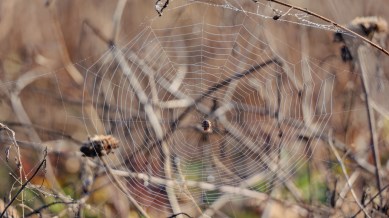📣 For more lifestyle news, click here to join our WhatsApp Channel and also follow us on Instagram
The world’s largest spider web — spread across roughly 1,140 square feet — found in a hidden sulfur cave
Scientists say this discovery challenges long-held assumptions about spider behaviour.

Deep inside a sulfur-filled cave on the border between Greece and Albania, scientists have discovered what is believed to be the world’s largest spider web — an enormous, interconnected network woven by around 111,000 spiders.
Spread across roughly 1,140 square feet (about 106 square metres), the web covers the walls and ceiling of the cave’s narrow passage, forming what researchers are calling a true “spider megacity.” The colony is composed mainly of two species — the common house spider (Tegenaria domestica) and the sheet-weaver spider (Prinerigone vagans) — which are typically solitary. Yet, inside this dark, sulfur-rich cave, they have adapted to live and hunt together.
Scientists say this discovery challenges long-held assumptions about spider behaviour. Spiders are usually solitary hunters, but this finding shows that under the right environmental conditions, they can display social tendencies and even form cooperative colonies.
Genetic studies also suggest that these cave-dwelling spiders are slowly diverging from their above-ground relatives — a glimpse of evolution in real time. The discovery not only fascinates biologists but also highlights how life adapts and thrives in Earth’s most unlikely corners.
As eerie as it sounds, this giant web is a masterpiece of nature — a delicate, sprawling structure spun in total darkness, quietly rewriting what we know about spider life.
📣 For more lifestyle news, click here to join our WhatsApp Channel and also follow us on Instagram